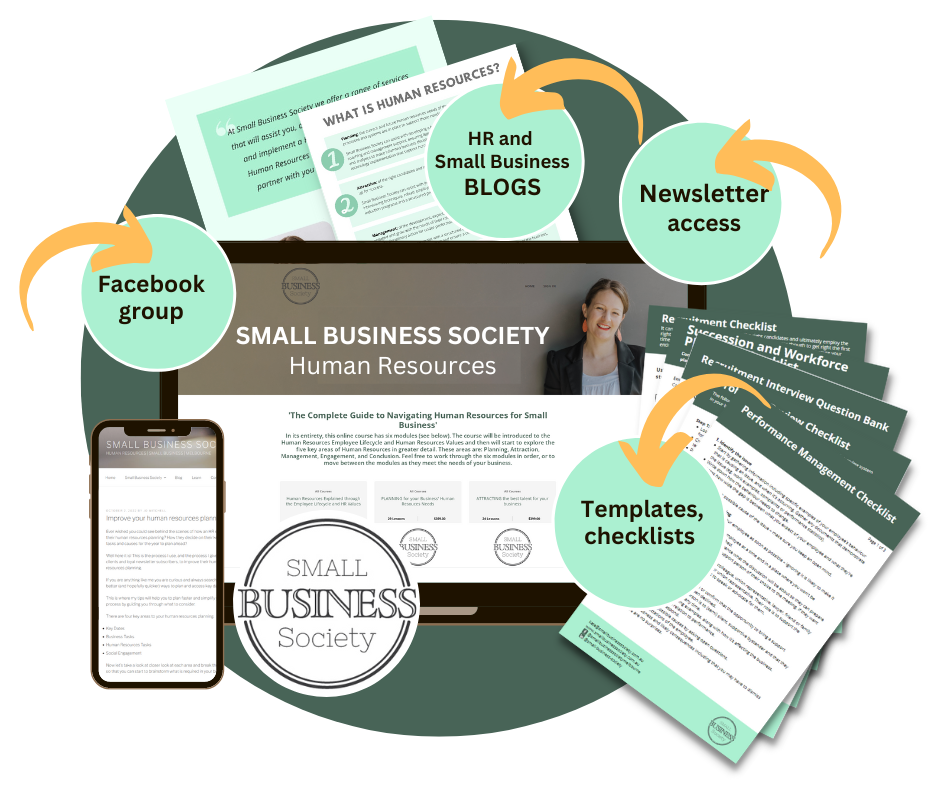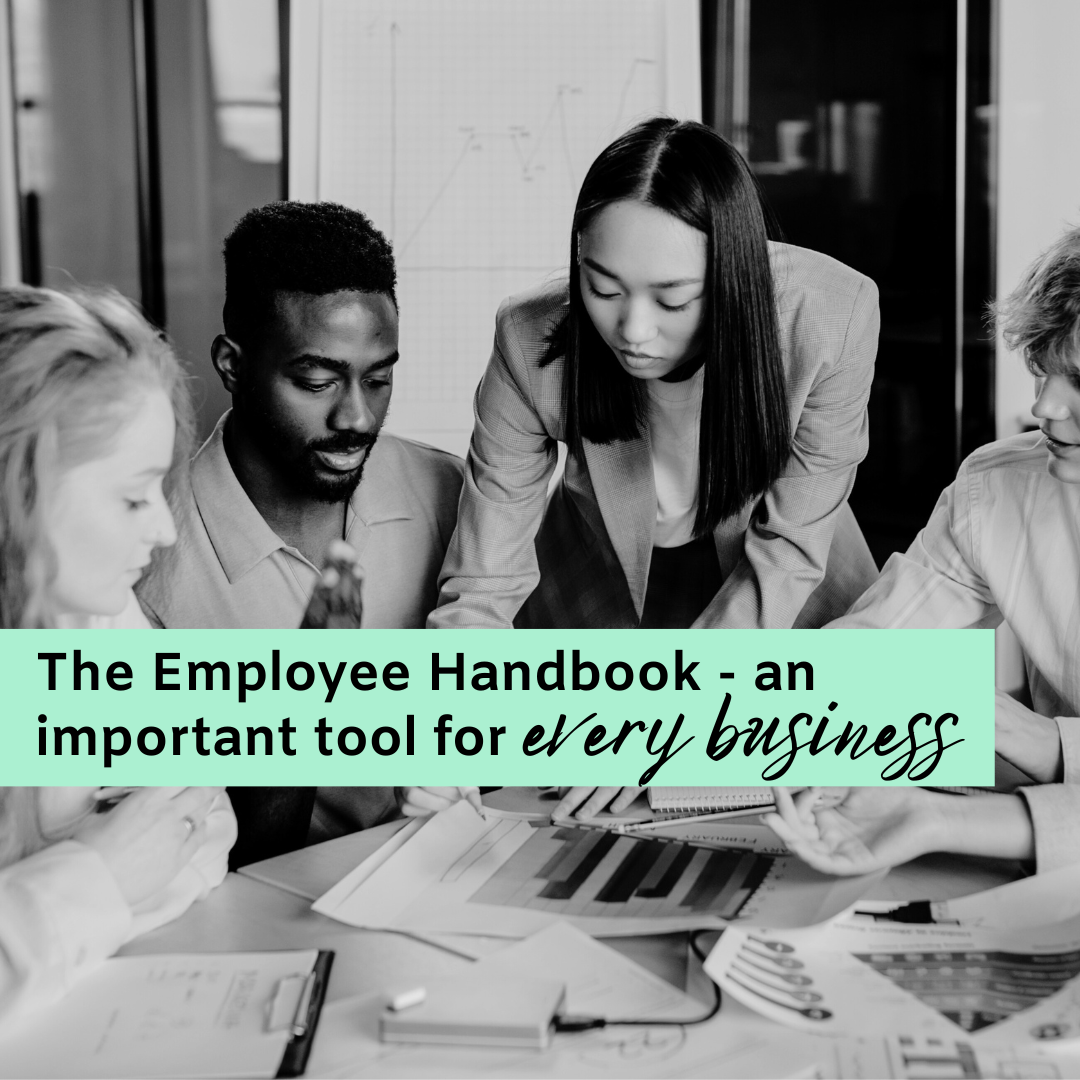An employee handbook is a document given to every employee to support the day-to-day operations of a business.
It is an important tool that documents not only the business’ suite of Human Resources policies and procedures but also provides an overview of the business, clearly sets the expectations of employees and employers, and enables a fair and consistent approach for all.
An employee handbook is a great way to induct new staff into your business and gives existing employees a document they can reference anytime.
Compiling an Employee Handbook – what to include
Employee handbooks communicate the specific needs of your business and the industry in which you operate. While there is no set structure on what to include, some standard pieces of information help set the tone or style within your business. Consider thinking about what your employees need to know to be most effective within their roles and an active members of your business.
Here are some of the things that you might like to start with;
- An employee welcome
- Company history and overview, including mission, vision, and values
- Your employment details
- Business environment details, and
- Key policies and procedures
An employee welcome
It is important to welcome people to your business, give them a great first impression, and explain the purpose of the Employee Handbook. A handbook (or manual) aims to introduce your employees to your business and provide more detailed information about your history, your clients, and what your business does.
The employee welcome can also outline the handbook’s contents, including information about your business terms and conditions of employment, expectations around employee behaviour, and details of key policies and procedures. This Employee Handbook must be read in conjunction with the employee’s Contract of Employment.
Company history and overview, including mission, vision and values
The second section of the Employee Handbook provides an overview of your business. In this section, you should explain how your business started and how it has evolved into its current business. This section should also explain what your business does, including an overview of the products and services offered, and outline the clients and industries that you service.
Finally, in this section, it is also important to communicate your business’ purpose or roadmap for success, including where you are headed and the expected values and behaviours you want your employees to demonstrate on the way.
Your employment details
In this section, you should tailor the information based on your business’s general customs and practices related to the employees’ employment arrangements. Areas to discuss in this section include; payroll, hours of work, including overtime, leave entitlements, and reimbursement of expenses and travel.
Business environment details
In this section, you should tailor the information based on your business’s general customs and practices related to the day-to-day business environment. Areas to discuss in this section include; work areas, security, kitchen, bathrooms, and meeting rooms.
Policies and procedures
The final section of the Employee Handbook outlines many key Human Resources policies and procedures for your business. Some sections of the employee handbook are governed by state and federal legislation, and it is essential that you continually keep up to date with legal changes.
Every employee has a different background and their own set of experiences that inform their ideas of what is appropriate in a workplace. The Employee Handbook should set the standard and educate your employees to ensure everyone is on the same page.
Depending on your business and the industry you are in, the handbook can look very different from company to company. Additional information can include:
- A section about after-hours work.
- Traveling.
- Use of company equipment or company cars.
This is not an exhaustive list of policies but a good starting point, and some are simply key to the smooth running and success of your business and interactions with clients.
First, there is a range of compliance policies that all businesses should have, including:
- acceptable workplace behaviour and conduct,
- addressing sexual harassment,
- bullying and discrimination,
- privacy, and
- occupational health and safety.
Following this, there is a range of policies and procedures that outline the various end-to-end human resources activities, including:
- recruitment,
- learning and development,
- performance management,
- termination, and
- dealing with grievances.
Lastly, there are particular policies to support tasks, resources, and equipment, including:
- flexible work practices,
- social media,
- computer and email usage, and
- travel and reimbursement of expenses.
Some policies and procedures require a stand-alone document. The way to determine what is right for your business is to decide how important it is for your business; have you had some issues in the past or something that you want to draw positive attention to by ensuring expectations and eligibility is clearly defined and communicated?
Your completed Employee Handbook – next steps
Once you have compiled your Employee Handbook, the handbook needs to be referred to regularly and maintained. Too often, businesses are caught out with ineffective or outdated policies because they give them little thought after implementing them.
Here are some guiding principles for developing and maintaining an effective workplace employee handbook:
Communicate
Communicate the information, overviews, and policies and procedures within the handbook to employees. Make it part of your business’ induction program to provide your employee access to the Employee Handbook and request them to sign a declaration acknowledging that they have read and understood. You might look at different ways to communicate the key messages with new employees through an e-learning module, PowerPoint presentation, case studies, or a summary sheet.
Review
Review information within the handbook, as it can quickly become ineffective or outdated as your business evolves or legislation changes. Set a plan in place for regular review of the policies and procedures. Make sure who is responsible for review and updates to existing documentation is clear.
Retrain
Regularly retrain existing employees’ knowledge of the handbook’s content, especially policies and procedures. Make it part of your annual human resources calendar to retrain existing employees in a section of the handbook to ensure everyone is clear about expectations.
Keep the employee handbook in a place where everyone can access it and keep a record of training details to assist with expiry dates and, therefore, when refresher training is due again.
If necessary, you can also host a training or info session, use part of an existing team meeting or adopt a monthly human resources topic to verbally communicate these changes, and take questions from staff to clarify details they are unsure about.
An employee handbook and the Human Resources policies within it provide a solid framework of understanding for employees and employers to work together. You can also refer to the handbook and the contents if an employee needs to perform or meet behavioural expectations.
Small Business Society can provide advice on developing a handbook that references a suite of policies that best suits your business’ needs.
The information provided in this document is for your guidance only and is general in nature. It does not constitute as legal advice. It is the responsibility of the individual to seek legal advice where required.
Sign up to Small Business Society and receive our newsletter each month plus other great resources to assist you on your Human Resources journey.

Are your leaders the best they can be?
Sign up to Small Business Society and we will send you our FREE 8 point plan for effectively supporting and developing your leaders and managers.
FREE 8 point plan for successful leaders
About Kate Tongue
Kate Tongue is the founding Director of Small Business Society.
She is a qualified and experienced Human Resources professional with more than 10 years of experience across the private and public sectors.
Her particular interest and experience is in managing the employee life cycle, delivering process improvements, and Human Resource strategy.
Looking for more information on the various stages of the employee life cycle or Human Resources in general? The following may interest you.
Articles to assist you leadership development:
Develop successful leaders and managers
Help your leaders lead
For further articles to assist you with your staff engagement:
Effective employee engagement
Staff engagement through a healthy work environment
Do you know your Human Resources terms?
15 must know HR terms
Plus lots more information and advice:
Small Business Society Blog
